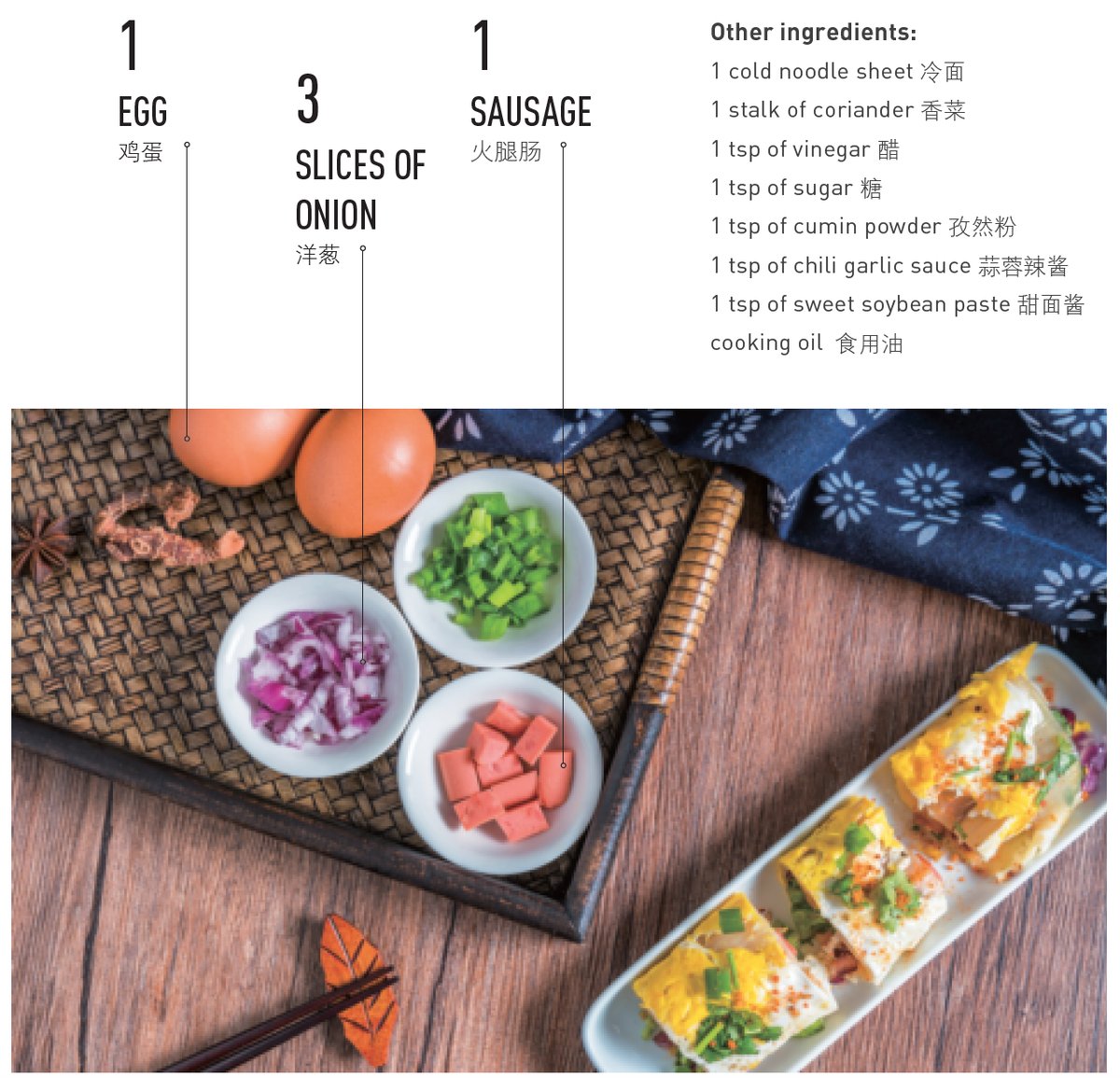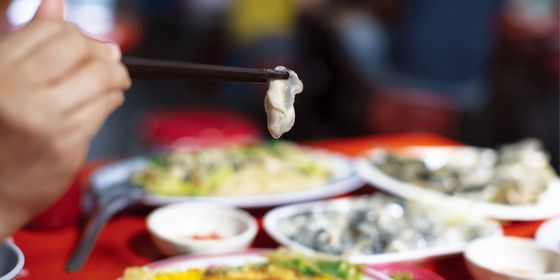“Grilled cold noodle (烤冷面)” is a popular street delicacy to sate late-night cravings
It’s not cold, grilled, or noodle-like in any way: So what is the street delicacy called kao lengmian (烤冷面, literally “grilled cold noodles”), and why was it the most popular midnight snack among Beijing urbanites according to data from takeout app Ele.me this past summer?
Lengmian (cold noodles), or naengmyeon, is a classic Korean dish with buckwheat noodles served in a cold spicy soup. Kao lengmian is served hot by frying a sheet of starch in oil and an egg on an iron griddle; rolling it up with fillings like sausage, onions, and coriander, and chopping the roll into small pieces. The “noodle” part comes from the fact that the roll is actually made from cold noodles pressed together, creating the grooves on its surface.
Despite some street vendors trying to cash in by advertising their kao lengmian as “authentically Korean,” the two products are unrelated. There are many stories about the origin of the Chinese snack, with some tales even tracing it to Liu Yu (刘虞), an official from the Eastern Han dynasty (25 – 220), or to Emperor Qianlong of the Qing dynasty (1616 – 1911).
However, there is no historical evidence backing these claims, and kao lengmian may be a rare Chinese delicacy invented entirely in the modern day. According to one urban legend, kao lengmian emerged in Mishan city of northeastern China’s Heilongjiang province in the 1990s, when a street vendor barbecued cold noodles with savory sauce and made a hit with the hungry students filing out of class, who spread it across the town. It’s unclear when the noodle sheets were invented. Another theory says that it was born in Tieling city of the neighboring Liaoning province, as an employee of a barbecue shop accidently dropped some cold noodles on the griddle and the thrifty boss, disliking waste, grilled them with squid and sold them.
The most common variation of kao lengmian, seen on street corners and night markets especially in the north of China, is prepared on a gas fueled-griddle often on the back of an electric cart. Vendors often advertise this version of the snack as an invention from Harbin, Heilongjiang’s capital city. Popular kao lengmian vendors usually draw a crowd of tired students and office workers in the evening, who shout their orders and have the owner customize the fillings and seasonings to taste. Novelty fillings include beef, chicken, fish, potato, and even stinky tofu. The snack can also be made at home, with a flat-bottomed pan and the packaged cold noodle sheets that are usually sold with a small bag of sweet soybean paste.
Steps:
- Wash and chop the onion and coriander, and cut the sausage into halves.
- Mix the vinegar, sugar, chili garlic sauce, and sweet soybean paste in a bowl.
- Heat the oil in a pan over low heat. Fry the two pieces of sausage until they change color, and set them aside.
- Soak the cold noodle sheet in cold water for a few seconds and place it in the pan to fry with the leftover oil over low heat.
- Break the egg onto the noodle sheet and spread it over the surface with a spatula.
- Turn the sheet over as the egg solidifies and continue frying.
- Brush the sauce on the noodle sheet, and sprinkle with chopped onion, cumin powder, and coriander.
- Add the fried sausage pieces and roll them up the sheet, and brush the sauce on the surface again.
- Take the roll out of the pan, cut it into 3-4 cm segments, and serve.
The Ubiquitous Street Snack That’s Neither Noodle Nor Roll is a story from our issue, “Access Wanted.” To read the entire issue, become a subscriber and receive the full magazine.













